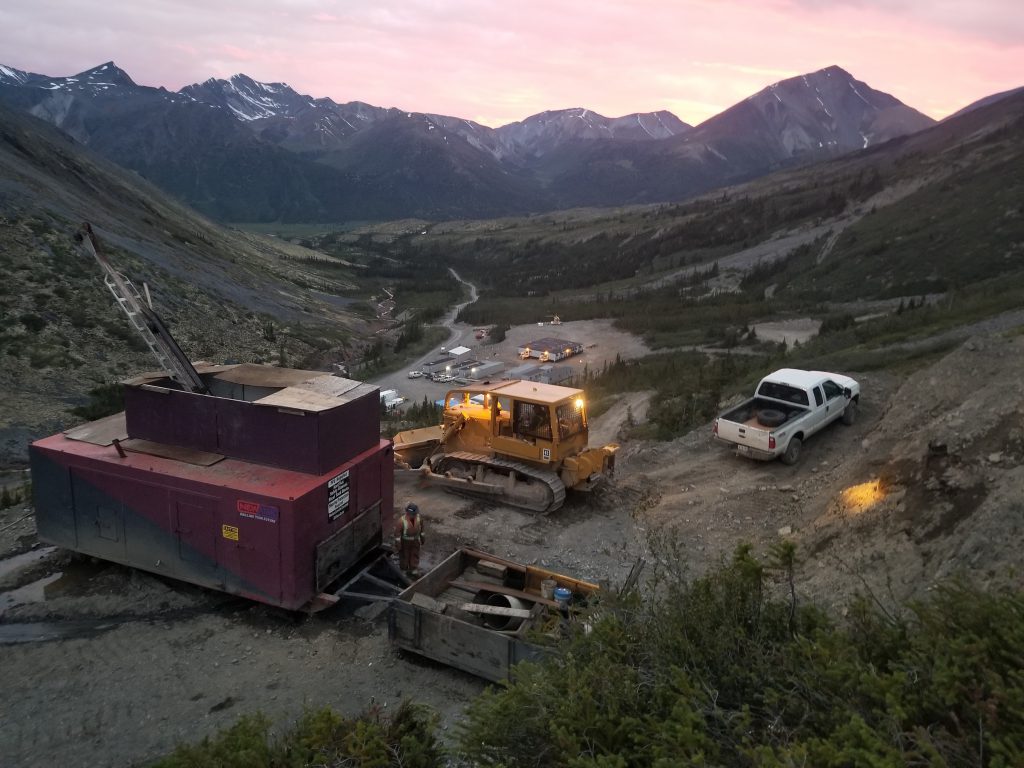Fireweed discovers more zinc at Macmillan Pass, Yukon

Fireweed Metals Corp. [FWZ-TSXV; FWEDF-OTCQB 20F-FSE], formerly Fireweed Zinc Ltd., reported the discovery of more zinc mineralization and the completion of the 2022 drill program at their 100%-owned flagship Macmillan Pass zinc-lead-silver project within the prolific Selwyn Basin zinc district of Yukon, Canada.
Fireweed has completed a 7,000-metre diamond drilling program at Macmillan Pass. Assays for all holes are pending. Step-out drilling has successfully extended the area of known mineralization at Boundary Zone.
New discoveries of massive sulphide and laminated stratiform zinc mineralization at Boundary Zone. Sphalerite veins and vein breccias intersected in multiple holes at Boundary Zone.
Infill drilling around the high-grade feeder zone at the Tom deposit has achieved significantly improved drilling recovery compared to nearby historic holes. A total of 11,000 metres of core have successfully been scanned using state-of-the-art XRF and hyperspectral sensors.
Brandon Macdonald, CEO, stated, “The 2022 drill program was not only our biggest, but it was our best. Our drilling consistently yielded wide zones of zinc mineralization at Boundary Zone, including many potentially very high-grade intervals and new discoveries. The infill drilling at Tom has produced some spectacular massive sulphide intervals that we anticipate will grade significantly higher than the grades of the surrounding blocks in the current mineral resource model due to better recoveries achieved by modern drilling. Our efficient drill program hit zinc mineralization in every hole, maximizing the value from this year’s drilling and going a long way to demonstrate the large size potential of Boundary Zone. Our new discoveries provide a compelling new addition to the Macmillan Pass project alongside our Tom and Jason deposits.”
At the Boundary Zone, 23 diamond drill holes were collared at Boundary Zone including six holes at Boundary West and 17 holes at Boundary Main.
At Boundary West, several step-out holes have intersected wide zones of massive sulphides, including a new zone of massive sulphides, leaving Boundary West open to the south and at depth. A particularly wide (75 m) step-out intersection in hole NB22-002 comprised an apparent greater abundance of galena and sphalerite compared to other massive sulphide intersections observed to date at Boundary West.
At Boundary Main, two significant new discoveries have been made. A new zone of massive sulphide was intersected in three holes (NB22-018, NB22-022, NB22-023) with high to very high visual abundances of sphalerite and galena. This zone was intersected between 70 and 120 metres vertically below surface, and based on bedding orientations and intersected thicknesses, it is interpreted to have a true thickness of approximately 7 to 10 metres. Another new zone of laminated sphalerite-galena mineralization was discovered in one hole (NB22-008) at Boundary Main. This zone was intersected over 2.65 metres with an undetermined true thickness and comprised a high abundance of sphalerite and moderate abundance of galena. Both of the new discoveries are stratiform, are open in multiple directions, and are located in the same stratigraphy as the Tom and Jason deposits, showing good potential to form extensive and continuous mineralized zones.
Boundary Main step-outs were longer holes (210 m to 370 m deep) drilled in multiple directions to test beyond the previous extent of zinc mineralization defined by pre-2022 drill holes, and successfully extended the mineralized zone. Vein-hosted and disseminated sphalerite were encountered in wide zones, including short intervals of anticipated high grades typical of this style of mineralization. Boundary Main remains open for extension in all directions.
Infill drilling focused on closely spaced short holes that targeted near-surface high-grade veins and vein-breccias to test the grade continuity of this mineralization style. Based on high abundance of coarse-grained sphalerite observed visually, many of these infill holes are anticipated to contain short high-grade zinc intersections which can only be confirmed once assays are received.
Eight infill holes were completed at Tom West, targeting feeder proximal mineralization to test the validity of the current geological resource model and improve drilling recovery in areas of historic poor drilling recovery.
One infill hole was completed at Tom East to test the geological model, and the hole confirmed the high sphalerite and galena abundances that are typical for this zone.
